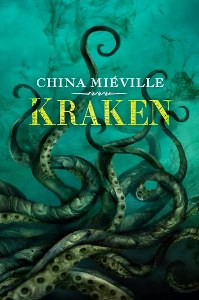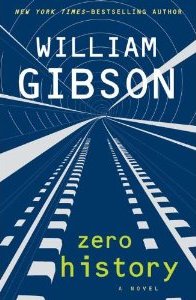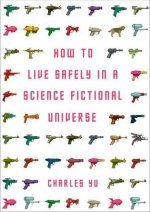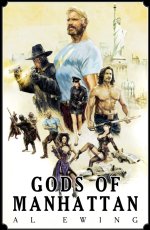
|
|||
|
by Neil Walsh
Welcome to the SF Site's 14th annual Editors' Choice Best Books of the Year -- our official Best Reading recommendations from everything we read in 2010.
You'll notice some overlap with the Readers' Choice Top Ten, and plenty of variance. Undoubtedly you can find some gem of a book here that you might otherwise have missed, as every book mentioned on this page is worth a look. Enjoy!
[Editor's Note: Where possible, links lead to SF Site reviews of the books.
You can find links to other Best of the Year columns here.]
|
|||
 Sourdough and Other Stories by Angela Slatter
Sourdough and Other Stories by Angela Slatter(Tartarus Press, August 2010)
This book features 16 stories of magic, passion, horror, and wonder, all set in and around Slatter's richly-imagined cathedral-city of Lodellan. Characters and events from one tale reappear or are referenced in the next, and while each of these fairy tale-like stories can stand on its own merit, the whole collection when read together forms a sort of mosaic novel that is beautifully realized and compellingly written.
|
 Lightborn by Tricia Sullivan
Lightborn by Tricia Sullivan(Orbit, October 2010)
This novel explores a mind-altering technology gone awry. The shine is beamed directly into the brain, and the recipient benefits from the best in self-improvement plus amazingly cool entertainment. Los Sombres is a city, now under quarantine, in which a renegade shine negatively affects only the adult population, driving them mad. Xavier is a Los Sombres youth who must find a drug to delay puberty until the shine can be shut down, or a cure can be found.
|
||
 Pink Noise by Leonid Korogodski
Pink Noise by Leonid Korogodski(Silverberry Press, November 2010)
This is a post-human novel, in which Nathi, a brilliant and talented brain doctor who died and uploaded his mind five centuries ago, is now tasked with saving a comatose girl with extensive damage to her brain. In mapping his own mind onto the damaged brain of this young girl, Nathi discovers a trap awaiting him -- the girl's brain harbor's a Wish Fairy, which is designed to kill the Wish that has enslaved all post-human minds, including Nathi's...
|

 Zoo City by Lauren Beukes
Zoo City by Lauren Beukes(Angry Robot, April & September 2010)
Zoo City is a festering slum of Beukes' re-imagined Johannesburg. Here the criminal underclass and their animal familiars rule the streets. Zinzi is a resident of Zoo City looking for a ticket out. She has a knack for finding things, including people -- even if they're doing everything possible to remain hidden. Zinzi is hired to find a pop starlet, and this could be her big chance to make it out of the slum. But only if she can stay alive long enough to outwit criminals and their magic, and get the job done.
|
||

 Freedom by Daniel Suarez
Freedom by Daniel Suarez(Dutton, January 2010 / Quercus, April 2010)
The latest from Daniel Suarez is a direct sequel to his first novel, Daemon (Penguin, 2008 / Dutton/Quercus, 2009). The Daemon is now in control of world commerce and has plans in motion to use real-world darknet operatives to tear down civilization and build it from the ground up. Former detective Pete Sebeck is the Daemon's most powerful -- and possibly most reluctant -- operative, and he must lead a band of enlightened humans to protect the new world order, all in the face of a brutal civil war.
|

 The Cold Kiss of Death by Suzanne McLeod
The Cold Kiss of Death by Suzanne McLeod(Gollancz, July 2009 & July 2010)
Second in the Spellcrackers series, in which Genny Taylor works for Spellcrackers.com, an organization of witches specializing in cleaning up magical messes. Ghosts, witches, vampires, grumpy neighbours, and sexual harassment at work are all facts of life for Genny. But when when one of her friends is magically murdered, she feels an obligation to track down the killer. Unfortunately, she herself appears to be the prime suspect...
|
||
 The Night Angel Trilogy by Brent Weeks
The Night Angel Trilogy by Brent Weeks(Orbit, October 2009 & October 2010)
Previously published separately as The Way of the Shadows (Orbit, October 2008), Shadow's Edge (Orbit, November 2008), and Beyond the Shadows (Orbit, December 2008). Azoth has one objective: to become the most accomplished assassin the city has ever known. He studies under the legendary assassin Durzo Blint in an effort to become the perfect killer. Did I say one objective? Ok, two: he also aims to survive. Neither of these goals will be easy to accomplish.
|

 Kraken by China Miéville
Kraken by China Miéville(Macmillan, May 2010 / Del Rey, June 2010 / Subterranean, August 2010 / Pan, November 2010)
This book was #2 on the Readers' Choice Top 10. For Billy Harrow, a curator at the British Museum, his pride and joy is a 40-foot specimen of a giant squid which the public loves to gawk at. Until one day it is mysteriously, impossibly gone. Then a human corpse is found folded and preserved in a smaller version of the squid's bottle. London is a far stranger place than Billy every realized, and someone or something is willing to kill in order to liberate the Squid God, or keep it hidden.
|
||

 The Dervish House by Ian McDonald
The Dervish House by Ian McDonald(Gollancz / Pyr, July 2010)
This novel was chosen by the SF Site Readers' as their favourite book of 2010. It begins with a suicide bomber on a crowded Istanbul tram, and follows the lives of 6 very different people whose lives are all affected by this incident, and whose paths intersect. One witness to the bombing thereafter begins to see djinni and saints; a young invalid witnesses the event through the eyes of a BitBot monkey, and witnesses someone else also spying remotely; this boy shares his concerns with a disgruntled professor who has been forced into retirement; another woman is delayed by the blast in her effort to get to a job interview and consequently takes a job that involves her in a nanoware company; an antique dealer is set on a quest to find a legendary object -- while her boyfriend is planning a stock-market scheme of unprecedented proportions.
|

 Zero History by William Gibson
Zero History by William Gibson(Viking/Berkley/Putnam, September 2010)
So the book the SF Site Reviewers and Contributors chose as the best of 2010 was the latest from William Gibson. It concludes the overarching story established in Pattern Recognition (2003) and continued in Spook Country (2007). Hollis Henry and Milgrim return in this final book to do more work for Hubertus Bigend -- no matter how badly they may want nothing more to do with him. Bigend's current scheme has them investigating the new trend for blending streetwear and military combat-wear. "The culture of the military has trickled down to the street -- Bigend knows that, and he'll find a way to take a cut. What surprises him though is that someone else seems to be on top of that situation in a way that Bigend associates only with himself. Bigend loves staring into the abyss of the global market; he's just not used to it staring back."
|
||
|
|||
Once again, we simply can't stop ourselves at a Top Ten that only includes a mere 10 books. So here are some further recommendations that narrowly missed actual Top Ten status, in reverse alphabetical order.
|
|||
|
If you find any errors, typos or other stuff worth mentioning,
please send it to editor@sfsite.com. | |||
















